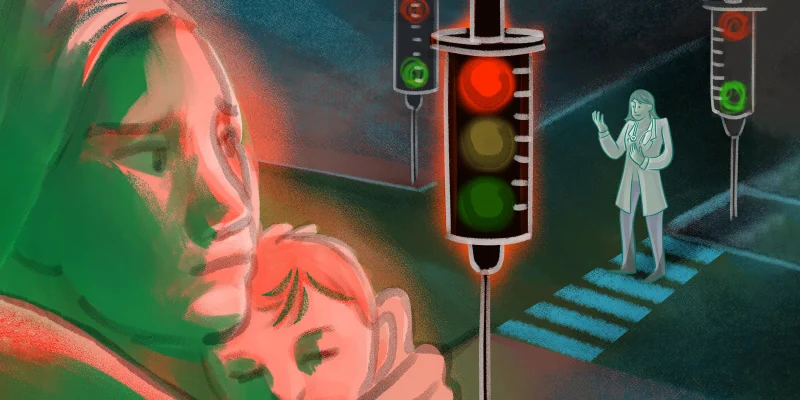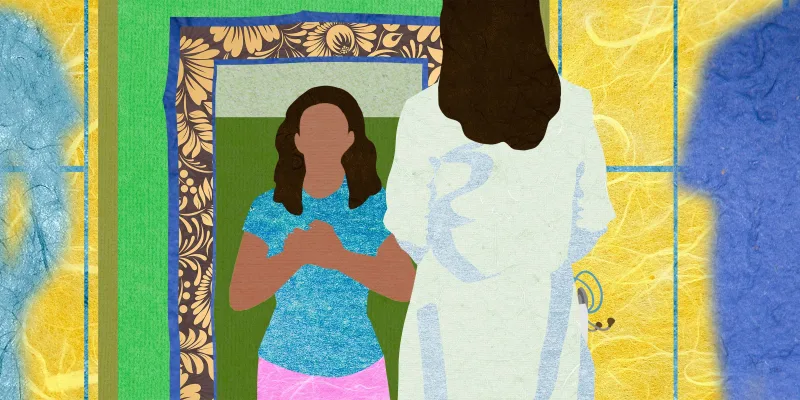In the rapidly evolving world of health care, the physician’s role is transforming. Once primarily tasked with diagnosing diseases and performing procedures, physicians are now at the nexus of technology, innovation, and patient-centered care. With the advent and adoption of AI, robotics, and data-driven decision-making, doctors are no longer just healers, educators, and problem-solvers – they are also innovators. This shift necessitates a profound change in how we train the next generation of physicians. We must go beyond traditional medical education and embrace a curriculum that fosters creativity, human-centered design, and innovative thinking.
Innovative thinking in medicine is not merely about creating new gadgets or apps. It’s a mindset that prioritizes understanding problems deeply and ideating solutions that meet the needs of patients, clinicians, and health systems. It is a fusion of creativity, empathy, and practical problem-solving, applied to address the real challenges faced by clinicians and patients alike.
The traditional model of medical education focuses on acquiring clinical knowledge, honing diagnostic skills, and mastering procedures. While these are critical, they form only part of what it means to be a modern physician. With AI increasingly aiding in diagnosis and decision-making, the value of a physician lies not only in their ability to identify diseases but also in their capacity to enhance the broader health care ecosystem. Physicians are uniquely positioned to recognize inefficiencies, identify gaps, and imagine new ways to deliver care because they are the end users of many devices, apps, software, and care delivery services. Yet, these skills are rarely taught in medical school. To adequately prepare physicians for their evolving roles, medical education must include creative thinking and innovation as core competencies along with medical knowledge.
Human-centered design is one approach that can revolutionize how medical students are trained. It is a problem-solving technique that puts real people at the center of the development process. In the health care context, this methodology prioritizes the needs, preferences, and experiences of patients, ensuring that solutions are tailored to their realities. By embedding design thinking into the curriculum, students learn to approach problems with empathy and curiosity, diving deep into the "why" behind issues before jumping to conclusions. For instance, instead of simply prescribing a treatment, students trained in human-centered design might explore why patients struggle to adhere to their medication regimens. Is it a lack of understanding? Difficulty accessing a pharmacy? Or something as simple as forgetfulness? These insights can inform practical interventions that address the root of the problem, rather than just the symptoms, such as care delivery pathways that incorporate the responses into the solution.
Incorporating innovative thinking into medical education means teaching students how to identify problems within the care delivery process. Every day, clinicians encounter inefficiencies, communication breakdowns, and logistical barriers that impact patient outcomes. Whether it’s a clunky EHR system or delays in scheduling follow-ups, these issues often go unaddressed because they are accepted as part of the system. Training students to view these pain points as opportunities for improvement can spark meaningful change. By teaching future physicians to ask, "How could this be better?" we can foster a generation of problem-solvers who view challenges in health care as puzzles waiting to be solved.
Beyond care delivery, medical education must also address the innovation process behind medical devices and software. These tools have revolutionized health care, enabling minimally invasive surgeries, real-time data monitoring, and personalized treatment plans. However, many of these innovations are designed without sufficient input from clinicians who use them daily. By involving medical students in ideating and developing these technologies, we ensure that future devices and software are not only cutting-edge but also practical and intuitive for the end users. Medical students are always looking for ways to gain part-time paid opportunities, and can be an excellent source of fractional specialized expertise for pre-seed and seed digital health companies. A student who spends a rotation brainstorming and designing ways to improve an insulin pump’s usability will bring a richer perspective to clinical practice and future innovation projects.
Facilities and care coordination are other frontiers where innovative thinking is essential. The physical spaces where care is delivered — hospital rooms, waiting areas, and clinics — are often designed without much thought to patient comfort or an efficient clinical workflow. In the two major Brooklyn hospitals where I worked, the resident rooms where doctors spend 8-24 hours a day didn’t have windows. Similarly, care coordination, which involves synchronizing treatments across multiple clinicians and settings, remains a significant challenge. Teaching students to think critically about these systems and spaces prepares them to reimagine health care environments that enhance patient and clinician experiences. Imagine a hospital room designed to reduce patient anxiety or a streamlined referral process that ensures continuity of care — these are the kinds of improvements that innovative thinking can bring to life.
One of the most compelling reasons to integrate innovative thinking into medical education is the unique perspective that clinicians bring to the table. Physicians, through their direct interactions with patients, gain insights that are inaccessible to those outside the clinical realm. They see the frustration of a patient struggling with a poorly designed medical device or how the inefficiency of a process delays a critical diagnosis. They witness how socioeconomic barriers prevent access to care and how communication gaps lead to medical errors. These experiences make clinicians invaluable collaborators in the innovation process. By equipping medical students with the tools to channel their clinical insights into tangible solutions, we empower them to become not just users of health care systems but also architects of their transformation.
This shift in education requires simultaneous changes to the curriculum and a cultural shift within medicine itself. For too long, creativity and out-of-the-box thinking have been undervalued in medical training. Students are taught to memorize and reproduce, leaving little room for questioning the status quo or exploring new ideas. But health care is not a static field. The challenges we face today — rising costs, disparities in access, and the integration of AI — demand innovative solutions that can only come from a culture that encourages experimentation and values fresh perspectives.
As a medical student, I have witnessed the power of innovative thinking firsthand. During workshops focused on human-centered design, I’ve seen peers come up with ideas like mobile blood collection labs for patients with mobility challenges or tech-enabled food delivery systems for individuals with medical dietary needs. These projects, though created in the span of a few hours, demonstrate the immense potential of combining clinical knowledge with creative problem-solving. They are proof that, with the right training, medical students can generate solutions that improve patient experiences and outcomes in meaningful ways and have more agency in designing health care.
The goal of integrating innovative thinking into medical education is not to turn every physician into a tech entrepreneur or product designer. Rather, it is to cultivate a mindset that embraces curiosity, collaboration, and a commitment to continuous improvement of health care. We must question the status quo, avoid stagnancy, and get a diversity of perspectives in the ideation of health care technologies and care delivery services. The future of medicine is being shaped not only by advances in science but also by the ability of its practitioners to adapt, innovate, and lead. By embedding innovative thinking into medical education, we prepare future physicians to meet these demands and ensure that they are not just participants in the health care system but active contributors to its progress. Beyond the stethoscope lies a world of possibility, and it is time we equip our medical students to explore it fully.
What do you think is missing from medical school education? Share in the comments!
Shreya Jain is a medical student at SUNY Downstate College of Medicine in NYC and an associate at Quintuple Aim Solutions, a value-based care advisory firm. She's a native New Yorker, amateur skier, and eternal optimist. She writes about medicine, business, tech, and education on X at @ShreyaJainNYC. Shreya Jain is a 2024–2025 Doximity Op-Med Fellow.
Image by MEHAU KULYK/SCIENCE PHOTO LIBRARY / Getty







